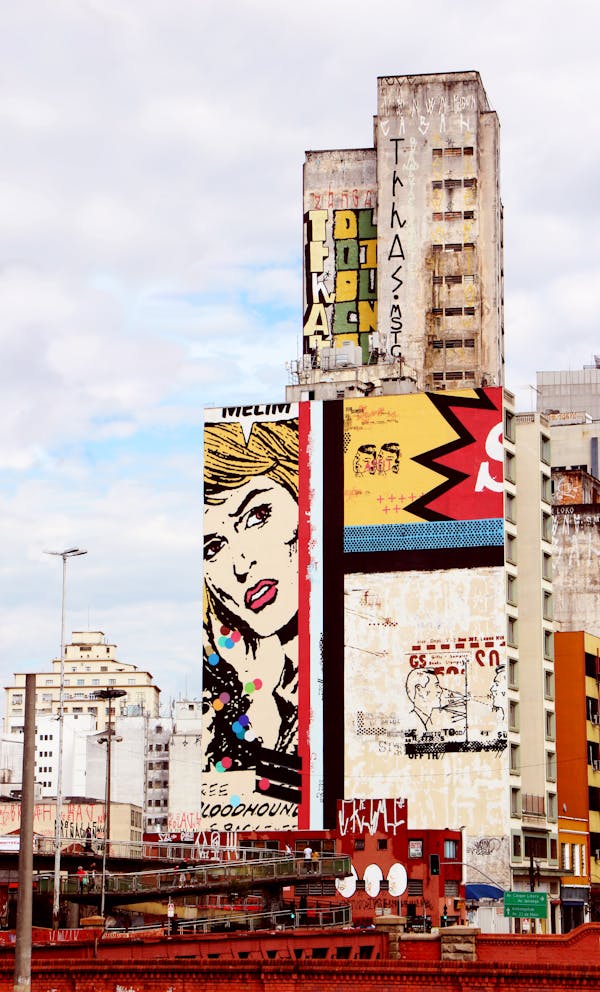How Street Art Is Shaping Urban Identity
Introduction: The Canvas of the City
Wandering through the streets of any major city, one can’t help but notice the vibrant murals, intricate graffiti, and thought-provoking installations that adorn walls, alleys, and public spaces. Street art has transcended its origins as mere vandalism to become a significant force in shaping urban identity. It reflects the soul of a city, capturing its history, struggles, and aspirations.
In this exploration, we’ll delve into how street art influences the character of urban environments, fosters community engagement, and serves as a medium for social commentary. From its rebellious roots to its current status as a celebrated art form, street art continues to redefine the landscapes it inhabits.
The Evolution of Street Art: From Rebellion to Recognition
Street art’s journey from illicit expression to recognized art form is a testament to its power and resilience. In the 1970s and ’80s, graffiti artists in New York City transformed subway cars and buildings into canvases, often facing legal repercussions for their work. Photographer Martha Cooper documented this era, capturing the essence of a movement that sought to reclaim public spaces and voice the experiences of marginalized communities.
Over time, the perception of street art began to shift. Cities like Miami embraced it, with initiatives like the Wynwood Walls transforming neglected neighborhoods into vibrant art districts. These projects not only beautified urban spaces but also attracted tourism and economic development.
Today, street art is celebrated globally, with artists commissioned to create murals that reflect local culture and history. This evolution underscores the medium’s capacity to adapt and resonate across diverse contexts.
Street Art as a Mirror of Society
Beyond aesthetics, street art serves as a mirror, reflecting societal issues and sparking dialogue. In San Antonio, for instance, artists have used murals to address themes of history, diversity, and social justice, fostering a sense of community and shared experience.
Similarly, Johanna Toruño’s “Unapologetic Street Series” in New York City amplifies the voices of queer Latinx individuals, transforming public spaces into platforms for representation and empowerment.
These examples illustrate how street art can challenge norms, elevate marginalized voices, and catalyze social change.
Revitalizing Urban Spaces Through Art
Street art has proven instrumental in revitalizing urban areas, turning derelict spaces into hubs of creativity and community engagement. In many cities, murals have been used to rejuvenate neighborhoods, attract visitors, and instill pride among residents.
Moreover, community-driven art projects often involve local participation, fostering a sense of ownership and connection to the transformed spaces. This collaborative approach not only enhances the visual landscape but also strengthens communal bonds.
Preserving Cultural Heritage Through Street Art
In the face of rapid urban development and globalization, street art plays a crucial role in preserving and celebrating cultural heritage. Artists incorporate symbols, motifs, and narratives that reflect the histories and traditions of their communities, ensuring that these stories remain visible and accessible.
By embedding cultural identity into the urban fabric, street art helps maintain a city’s unique character and fosters a deeper appreciation for its diverse heritage.
Conclusion: The Enduring Impact of Street Art
Street art has emerged as a dynamic force in shaping urban identity, transforming public spaces into canvases that reflect the complexities of city life. Its evolution from underground expression to celebrated art form underscores its adaptability and relevance.
As cities continue to grow and change, street art will undoubtedly remain a vital medium for storytelling, resistance, and community building. By embracing this art form, urban environments can cultivate spaces that are not only visually engaging but also rich in meaning and cultural significance.
